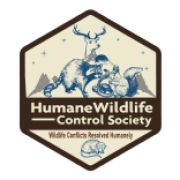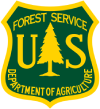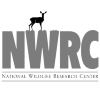Humane Wildlife Control in Boston, MA
The Humane Wildlife Control Society recommends non-invasive solutions to resolve human-wildlife conflicts. This includes:
Determining if the issue needs to be addressed at all
Opting for preventative measures first
Opting for wildlife exclusion as opposed to trapping
If trapping is the only way to solve the problem do so humanely
The Humane Wildlife Control Society screens candidates prior to recommendation. Our process requires any company we recommend to meet the following criteria:
Is properly licensed in Massachusetts for wildlife control
Carries appropriate business licenses and insurance
Complies with all Massachusetts laws and regulations for wildlife control
Adheres to the humane principles listed above.
In Boston, Massachusetts we recommend Humane Wildlife Removal Boston for professional wildlife control services. This is a private company that charges for their services.
Contact Information:
Bay State Wildlife
617-939-9710
If you have any wildlife issues that can be handled by the state government agency for free, the Massachusetts Wildlife Commission can help.
State Contact Information: (508) 389-6300
The State Department of Agriculture may also be able to address your wildlife problem for no charge.
USDA Contact Information: (617) 626-1700
Humane Wildlife Solutions in Boston, Massachusetts Why Humane Solutions Are Necessary Key Humane Strategies Exclusion: Preventing entry is the most effective control, per the National Wildlife Control Training Program. Seal gaps in roofs, chimneys, and foundations with durable materials like steel flashing. One-way doors—proven in studies by wildlife biologists—allow animals like bats or squirrels to exit without re-entering, avoiding harm or stress. Legal and Scientific Foundations Benefits of Humane Approaches
Evidence-Based Strategies for Urban Coexistence
Boston, Massachusetts, a historic city framed by the Charles River, Boston Harbor, and nearby green spaces like the Arnold Arboretum and Emerald Necklace, hosts a diverse wildlife population—squirrels, raccoons, bats, skunks, and urban-adapted birds like pigeons. As these animals navigate the city’s dense neighborhoods and historic structures, humane wildlife solutions are critical to protect public health, property, and ecological balance. This section outlines Boston’s research-supported approaches, emphasizing education and ethical management over outdated, harmful methods.
Wildlife in urban Boston poses tangible challenges. Raccoons raid trash in Back Bay, squirrels nest in Beacon Hill attics, and bats roost in older buildings, potentially spreading diseases like rabies or histoplasmosis (a fungal infection linked to bat guano, per CDC studies). Property damage—chewed wiring, ruined insulation—or safety risks from defensive animals demand action. Research, including studies from the Humane Society of the United States, shows lethal methods (e.g., poisons, snap traps) often fail long-term, as new animals repopulate vacant niches. Humane solutions, backed by science, address root causes while aligning with Massachusetts’ wildlife protection laws.
Boston employs evidence-based, non-lethal methods:
Relocation: When exclusion isn’t feasible, live trapping captures animals safely using baited cages. Massachusetts Division of Fisheries and Wildlife (MassWildlife) regulations require relocation to suitable habitats by licensed professionals, ensuring survival and compliance with state laws protecting species like bats (listed as beneficial for pest control).
Habitat Modification: Research from the Cornell Lab of Ornithology highlights modifying environments to deter wildlife. Secure trash with weighted lids, remove bird feeders in problem areas, and trim trees near homes to limit access. These steps reduce attractants, a primary driver of urban wildlife conflicts.
Boston’s Urban-Wildlife Dynamics
Boston’s cold winters, humid summers, and proximity to water and parks shape its wildlife patterns. Winter drives animals indoors for warmth—MassWildlife notes increased squirrel and bat activity in January—while spring breeding seasons amplify populations in areas like Jamaica Plain or Dorchester. The city’s aging infrastructure, with 19th-century homes and narrow alleys, offers easy entry points. Humane solutions adapt to these conditions, preventing seasonal spikes in conflicts while preserving Boston’s ecological role as a migratory bird stopover and habitat connector.
Massachusetts law, under M.G.L. Chapter 131, governs wildlife management, prohibiting cruelty and requiring permits for handling protected species (e.g., bats, regulated due to white-nose syndrome declines). Boston’s municipal codes reinforce these standards, banning toxicants in residential zones to protect public health. Research from the U.S. Fish and Wildlife Service supports humane methods, showing they reduce repeat infestations compared to lethal control, which disrupts ecosystems and invites reinvasion.
Health Safety: Avoids risks from decomposing carcasses or chemical residues, per EPA guidelines.
Sustainability: Maintains biodiversity, crucial in urban settings, as noted in urban ecology studies.
Cost-Effectiveness: Prevents recurring damage, saving homeowners money long-term, per Humane Society data.
Educating Boston Residents
Identify Issues Early: Look for signs—gnawing, droppings, or nocturnal noises—and act promptly.
Implement Prevention: Seal homes before winter and secure waste year-round, reducing 80% of conflicts (Wildlife Society estimates).
Engage Experts: Use MassWildlife-licensed operators for safe, legal interventions—DIY risks failure or fines.
A Research-Driven Path Forward
Humane wildlife solutions in Boston blend science, law, and practicality to manage urban-wildlife interactions. By prioritizing exclusion, relocation, and habitat changes, we protect our city’s residents and its natural heritage. Education is key—understanding these measures empowers Bostonians to coexist responsibly with wildlife, ensuring a healthier, more balanced urban environment.







